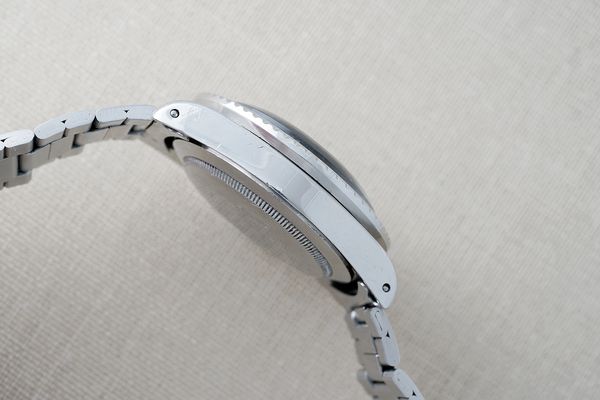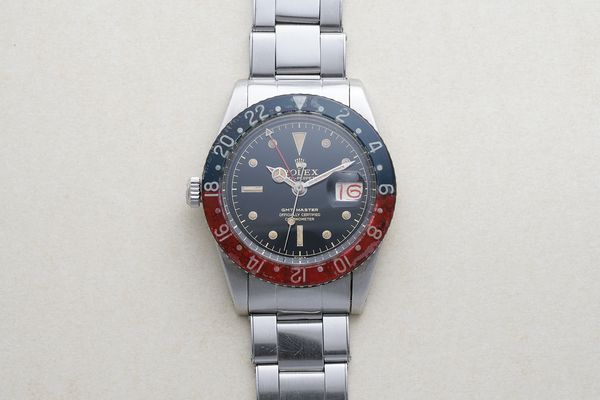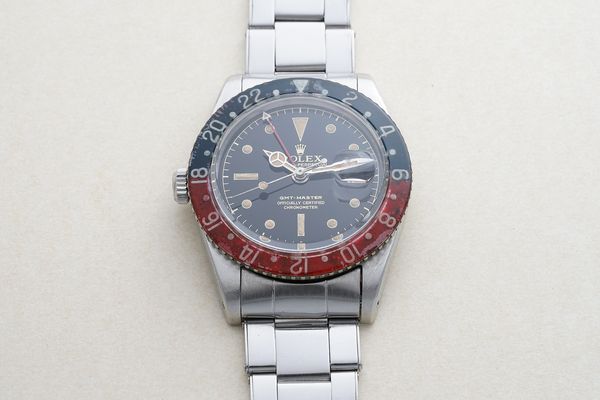- By Marcello De Marco
Wristwatch collecting is a relatively new field which began as an extremely “niche” hobby in the 1980s and 1990s, but has since grown to include a much wider audience. As the number of collectors increased, so has our knowledge about vintage pieces. A deeper and more accurate account of important models has developed as a consequence of many watches becoming public, at auction or within collecting circles.
The collective interest in watches has had a positive impact on all watches, with collectors paying more attention to ‘tool’ watches, whose value can be found in their utility , but introduced important innovations for mechanical watches nonetheless. The rise of Rolex as a major force in the vintage market is a direct consequence of the emergence of a new type of collector. The watchmaker is arguably the most important manufacturer of professional and sports timepieces, a category which collectors have gradually given more importance to.
The evolution of these pieces has become the subject of study for many scholars, previously concerned with more refined timepieces, and unsurprisingly, professional timepieces have become very desirable because of their functionality, timeless design, size, and in the case of early models, their historical importance.
With that in mind, it is of particular interest the appearance of two previously unknown and highly unusual professional Rolex timepieces which were discovered by the Phillips Hong Kong team: a left-handed GMT-Master Ref. 6542 and a no-valve Sea-Dweller Ref. 1665. Like two pieces of a puzzle, these newly discovered watches may help towards completing the complex picture of the Rolex manufacture in the 1960s. Let’s take a closer look at each piece.
The Sea-Dweller line is extremely peculiar in the sense that if one looks at the number of vintage Sea-Dweller references, one would get the impression of an extremely simple evolution as Rolex offered only two models, the reference 1665, introduced in the late 1960s, later followed with the reference 16660 ‘Triple Six’ in the late 1970s, before the introduction of the first modern and commercial Sea-Dweller, the reference 116600, made during 20 years between1989 and 2009. This is in sharp contrast with the abundance of vintage Submariner references (fourteen models in total, ten of which were launched in a six-year span between 1953 and 1959).
However, the history of the Sea-Dweller is much more complicated than expected. Rolex’s super-diver underwent an extremely intense research and development process in its early stages, with multiple versions being produced. It is arguably the “most professional” timepiece ever made by Rolex, in the sense that at the beginning it was not commercially available, but only sold to companies and organizations. Thus, all the tiresome contrivances of marketing a watch to the general public, such as introducing new reference numbers with every modification, were not necessary for this model.
Another consequence of the professional genesis of this piece is that its early history is extremely haphazard. In the simple terms, we could say that the Sea-Dweller is essentially a Submariner with increased depth rating and with an added gas escape valve. When approaching the study of the model for the first time, I expected to find an organic evolution of the line. Perhaps it all started with a Submariner with improved water resistance, which was then fitted with a gas escape valve, and with additional tweaks would become the first proper Sea-Dweller reference - or something along those lines.
However, I found a much more complex situation, the valve-bearing Sea-Dweller 1665 appearing in the late 1960s alongside no-valve peers from the same period, while the Submariner with valve actually came later, in the early 1970s. This is because the companies that Rolex supplied presented specific demands for their timepieces, and the production was not so much an incremental upgrade of an existing model, but more of a “refitting” that would satisfy the client’s request.
For example the helium-saturated Sealab III habitat required watches with a gas escape valve, but the roughly concurring Tektite I experiment did not, and so two different versions of the Sea-Dweller were made for the two endeavors. The example discovered in Hong Kong is one of the few reference 1665 models produced without gas escape valve, and an educated guess would place it in the batch made for the Tektite I experiment. Further adding detail to what is known about this batch, the watch confirms that some double-red dials were mounted on these watches, while the majority of these pieces bear a single-red Sea-Dweller dial. The present watch joins the extremely restricted ranks of the no-valve double-red Sea-Dwellers, of which very few are known to the community.
The GMT example is equally exciting, not just because of its historical importance, but rather, as it provides additional insight into the production processes ongoing in Rolex at the time. Obviously, the company’s paramount concern was the reliability and overall performance of the timepieces. The focus was on professional models, and in order to claim this market the company submitted many of its models to the most daunting and challenging environments (Mariana Trench, Mount Everest, Channel crossing, to name a few), the survival and performance of their watches subsequently becoming the focus of global marketing campaigns.
It then comes as no surprise that the company was open to providing modified versions of its pieces to left-handed users, and it is speculated that this option was available for most, if not all Rolex watches. Several are known, and like all Rolex vintage sport’s pieces these display the reference number between the lugs at 12 o’ clock, and the serial number at 6. The present GMT, the only known left-handed example, correctly presents the numbers where one would expect them to be and conclusively proves that Rolex did in fact produce such a version of the model.
The fact that today these two watches are recognized as highly important and collectible pieces not only speaks volumes about how far the community has grown and the field has matured, but it can also be considered a major success for all the collectors, authors and scholars and their ongoing quest to educate the market. After all, only one or two persons can own the watches themselves, but the fascinating history of their evolution and their peculiarity can now be truly appreciated by the community at large.
The no-valve Rolex Sea-Dweller Ref. 1665 (Lot 953) and the left-handed Rolex GMT-Master Ref. 6542 (Lot 952) will be offered during the Hong Kong Watch Auction: SIX, on May 29. For more information on the watches in the catalogue, please click here.






